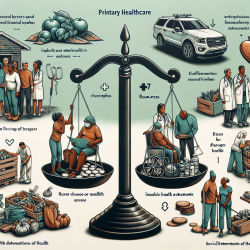Empowering Change: Using Data to Improve Outcomes for At-Risk Youth
In a world increasingly driven by data, understanding and leveraging research findings is crucial for practitioners aiming to improve mental health outcomes, particularly for at-risk youth. A recent study titled Changes in suicide in California from 2017 to 2021: a population-based study provides valuable insights into the shifts in suicide rates across various demographics in California, especially during the COVID-19 pandemic.
Understanding the Findings
The study revealed a complex picture: while overall suicide rates in California decreased during the pandemic, certain groups, including Black Californians and young people aged 10 to 19, experienced an increased burden. This underscores the need for targeted interventions that address the unique challenges faced by these groups.
Implications for Practitioners
For practitioners, these findings highlight the importance of tailoring interventions to meet the specific needs of different demographic groups. Here are some strategies that can be implemented:
- Data-Driven Interventions: Use data to identify at-risk groups and tailor interventions accordingly. For instance, focusing on mental health support for Black youth and young adults could be crucial in mitigating the increased suicide risk identified in the study.
- Community Engagement: Engage with community leaders and organizations to better understand the cultural and societal factors contributing to mental health challenges. This can help in designing culturally sensitive interventions.
- Collaboration with Schools: Schools play a pivotal role in children's lives. Collaborating with educational institutions to implement mental health programs can provide early intervention opportunities.
- Teletherapy Services: With the rise of online therapy, platforms like TinyEYE can be utilized to reach children and adolescents who may not have access to traditional mental health services.
Encouraging Further Research
While this study provides valuable insights, it also opens avenues for further research. Practitioners are encouraged to delve deeper into understanding the underlying causes of the observed trends. Questions such as the impact of socioeconomic factors, access to firearms, and the role of social isolation during the pandemic warrant further exploration.
Conclusion
The findings from the California study serve as a call to action for practitioners to utilize data-driven approaches in addressing mental health challenges among youth. By focusing on targeted interventions and fostering collaboration across sectors, we can work towards creating better outcomes for children and adolescents at risk.
To read the original research paper, please follow this link: Changes in suicide in California from 2017 to 2021: a population-based study.










